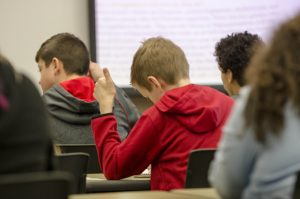Toolkit Item Overview

Our initial Problem of Practice stated, “Students routinely report and demonstrate difficulty integrating the words and ideas of others into their own work. Since academic writing depends on students’ ability to enter an ongoing conversation, this is a significant problem” (2015).
In his essay “What is ‘College-Level’ Writing?” Patrick Sullivan argues that students need to be college-level readers, thinkers, and writers. Each member of Cohort A knew that students often lack the critical and rhetorical reading skills needed to be college and career ready readers, thinkers, and writers. In order that students move through their Bridge-to-College English 12 course in a way that prepares them for college and career level work, it was determined that before students can effective writers, they need to be effective readers. While much of the evidence is anecdotal and personal, the research of such scholars as Rebecca Moore Howard and her examination of plagiarism and patchwriting found that much of these two problems can be traced to an inability to read rhetorically and critically.
Resources Used to Inform this Toolkit
The general thrust of the scholarship is that what students learn and do in high school matters and that a good deal of it transfer to the college level. The problem is in the disconnect between the pressures and expectations faced by high school teachers (standardized test prep, AP and SAT writing prompts, “writing as performance” in general) as opposed to the greater amount of “writing to learn” that students are expected to engage in at the college level. To be successful writers at any level, students need to be more focused, intentional, and critical readers and need to be taught how to be such a reader.
Key Lessons We’ve Learned
Each member of the cohort developed their own intervention as it seemed to best fit their particular circumstances. For instance, Bradley’s students were working with texts that were more written for high school and college English and writing teachers. He asked them to simply restate the content of the material. Katie’s students worked with texts that were written for a more general readership, though that didn’t make them necessarily more accessible as few high school students have practice with book-length nonfiction texts. Katie’s students were asked to provide more in the way of response and commentary on their interaction with the text.
Comprehensive Guide to Utilizing Our Tool in Your Classroom

